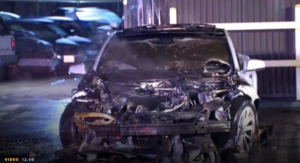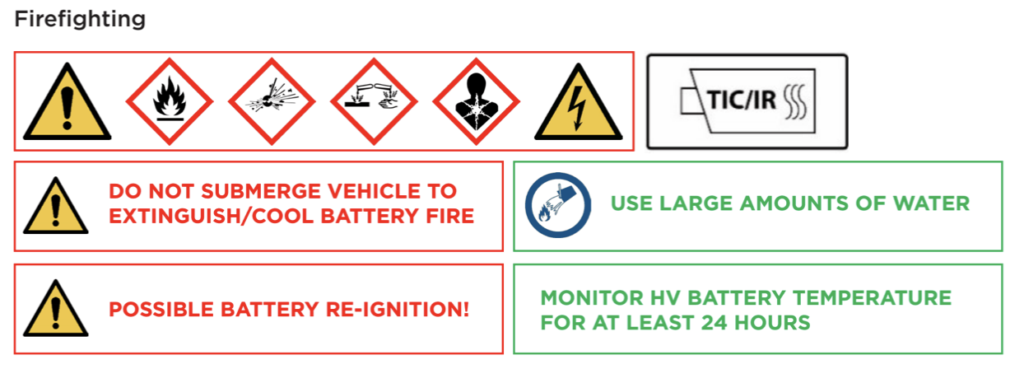CNBC reported today as breaking news a concern about hybrid and electric vehicle fires that professional firefighters have known about for some time.
Vehicles with lithium-ion batteries can be especially dangerous when they catch fire.
CNBC offers a video showing smoke billowing from three electric pickups parked tightly together.
Moments later, flames shoot several feet above the vehicles, which were unoccupied.
Fires involving EV batteries can burn hotter and longer and require new techniques to extinguish, posing a growing challenge to first responders.
Hybrid electrics, which have both a high voltage battery and an internal combustion engine, have a 3.4% likelihood of vehicle fires according to a study, far higher than either internal combustion or electric alone.
Spontaneous combustion of an EV battery is unlikely, but collisions are a concern.
Tesla publishes an EV firefighting guide. Warnings include:
Fire Professionals report there are no effective techniques or equipment to extinguish the fires.
The truth of the matter is there is no simple solution or tool to stop a thermal runaway in an EV’s high-voltage battery. Directly cooling the battery cells is the best method, however the manufacturers do not give first responders direct access to the inside of the battery box. Trying to cool the battery cells from the outside will only extend a crew’s time on scene.
If the battery box is intact and there are no exposures, the best solution is to simply wait for the battery to burn itself out, then extinguish the remaining class A fire.
For the rest of us, even those driving internal combustion vehicles who may get in a mishap with an EV or hybrid vehicle, just get away and stay away and upwind of any fire.
You may be there for a while.



Leave a Reply
You must be logged in to post a comment.